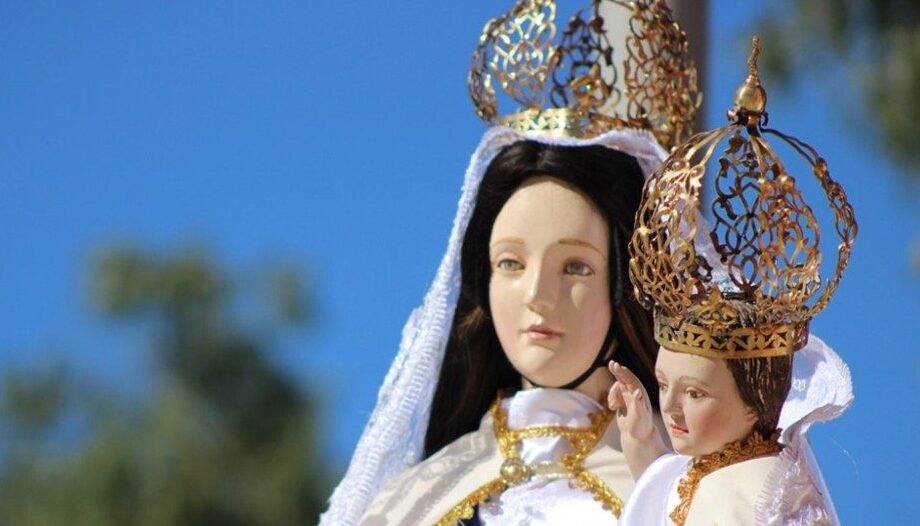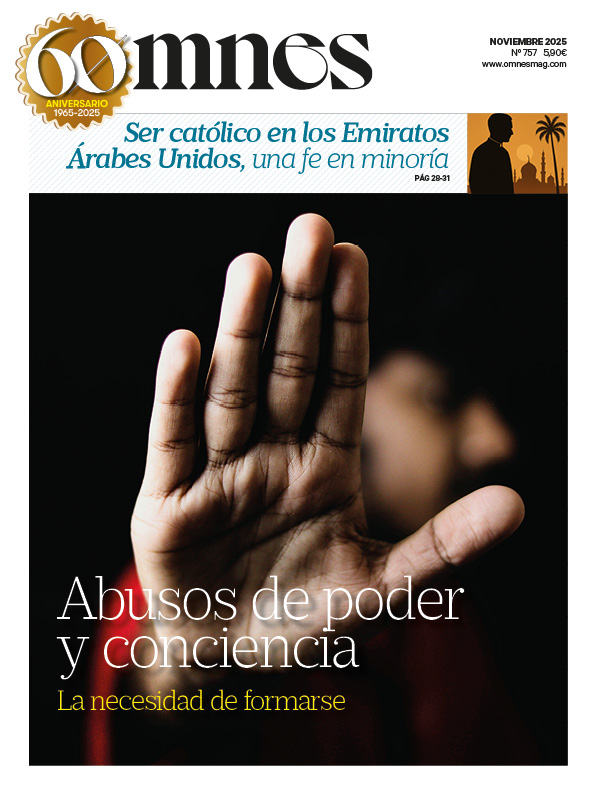"By paying tribute to seafarers each year, precisely during the second Sunday of July, also known as Sea Sunday, Catholic communities around the world wish to focus attention on those people who work in this sector and pray for them."
These include "crews of vessels carrying goods, port workers, tugboat operators and stevedores, coastguards, vessel traffic personnel, salvage personnel, customs agents and fishermen, and all those with whom they collaborate, as well as their families and communities," notes a Message by Cardinal M. Czerny S.J., Prefect of the Dicastery for the Service of Integral Human Development of the Holy See, written for this Sunday and dated June 24.
The total number of these workers and their families is surely in the millions, the text notes. "On Sea Sunday gives visibility to the everyday aspects of their lives that would otherwise remain invisible. Today, as in the past, seafaring means long periods of absence, months or even years, from home and land. Both seafarers and their families can miss significant moments in the lives of their loved ones."
Example of St. Paul
"The example of St. Paul, who spent much time on the high seas during his missionary journeys, is a source of encouragement and strength," he adds. "Christianity spread by sea to distant lands; there was no other option. The Church today can draw inspiration from the inhabitants of coastal communities, who were the first to hear the entirely new message of Christ from the mouths of the apostles who traveled by sea and from other missionaries."
"The arrival of new vessels meant more encounters and exchanges, greater openness to novelties and to the immense possibilities that existed beyond the local shores. The call to welcome the stranger can challenge us when we prefer to remain socially and spiritually isolated. We cannot open ourselves to the possibilities of life if we prefer the comfort of the familiar. The path of openness is the path of hope", writes Prefect Michael Czerny in a text collected by the episcopal conferences.
Dignity of seafarers
The cardinal then goes on to address issues concerning the dignity and rights of seafarers, such as possible injustices. "Undoubtedly, the salary they receive can be an incentive so that these sacrifices can be worthwhile for them; even so, this benefit can be threatened by injustices, exploitation and inequality. It is wonderful, therefore, when volunteers, chaplains and members of local Churches in ports, who are actively involved in the pastoral care of seafarers, stand up for the dignity and rights of seafarers."
Moreover, it is recalled that in the face of the tendency to remain distant and distant from one another, "Pope Francis affirms: 'True wisdom presupposes an encounter with reality (...). The problem is that a path of fraternity, local and universal, can only be traveled by spirits that are free and ready for real encounters" (Fratelli tutti, 47, 50).
Integration into the life and pastoral ministry of the Church
"The pastoral care of the sea can help, in many ways, to integrate the periphery with the center, for example, by meeting, in person and in prayer, with seafarers, improving the material and spiritual conditions of workers, defending their dignity and rights, and promoting international relations and those policies aimed at protecting the human rights of those who travel and work far from their families and their countries of origin."
"The Church is called to serve every member of the human family. Since seafarers come from all the countries of the world and profess all the world's religions, including them in the life and pastoral care of the Church facilitates a growth in mutual understanding and solidarity among all peoples and religions," continues the Cardinal, who turns in conclusion to the Virgin Mary: "We ask Our Lady, Star of the Sea, to accompany all those whose life and work are marked by the sea and to be their guiding star on the way to Christ."
Virgen del Carmen and Seafarers' Day
"Care for the seas; care for their people" is the motto with which the Church celebrates the People of the Sea Day 2024. This day is celebrated every year on July 16, coinciding with the feast of its patron saint, the Virgen del Carmen.
In addition to European countries such as Italy and Spain, in Latin America devotion to the invocation of the Virgin of Mount Carmel is profound: she is the Queen and Patroness of ChilePatroness of ColombiaPerpetual Mayoress of Lima (Peru), Patroness of the Venezuelan Army, Marian reference in Costa Rica, Nicaragua, Guatemala, Mexico, Panama, Puerto Rico..., etcetera.
The Bishop Luis Quinteiropromoter of the Apostleship of the Sea in Spain, and apostolic administrator of Tui-Vigo in writing these lines, has argued what this year's theme responds to. "In the current context of serious environmental problems and a persistent lack of consideration for the needs and rights of seafarers, especially in some countries, Mary calls us to care for the seas and to care for their people. Pollution of the seas is a pressing problem, assistance to seafarers a constant demand. Therefore, 'we must take care of them'".
Origins
The devotion to Our Lady of Mount Carmel has its roots in Mount Carmel in Holy Landwhere the first Christian hermits lived. These hermits, inspired by the prophet Elijah, venerated Mary as the Flower of Carmel. The Carmelite Order, founded in the 12th century, adopted Our Lady of Mount Carmel as its patron saint and spread her devotion throughout the world, explained the CARF Foundation.
Pope Francis has highlighted the role of Our Lady of Mount Carmel as guide and protector of sailors and fishermen, underlines the same Foundation. In a general audience, he commented: "Our Lady of Mount Carmel is a star that guides those who seek peace and security in their faith".
The prior of the convent of Santa Teresa in Madrid, P. Antonio Gonzalez, Barefoot CarmeliteDuring an intense week due to the novenas in the temples, he commented to Omnes, among other aspects, that "the devotion to the Virgin of Mount Carmel was born in the bosom of our Order", and that "the scapular is a central piece of our habit".
Scapular of Carmel
The historian and also a Discalced Carmelite Daniel de Pablo Maroto has highlighted some experiences that make him live with special intensity the feast of Our Lady of Mount Carmel. Among others, "the memory of the Mount Carmel in Palestinewhere the Carmelite convent of 'Stella Maris', Star of the Sea, is located, with the shrine of the image of the Virgin of Mount Carmel; a sanctuary that overlooks the beautiful bay of Haifa, an extraordinary gift for the eyes".
"The principal grace and prerogative of the use of the Carmelite scapular," the Carmelite author also writes, "comes from a centuries-old verbal tradition (1251) confirmed in a fourteenth-century liturgical document as a revelation of Our Lady of Mount Carmel to St. Simon Stock that sounds like this: 'This will be the privilege for you and all Carmelites: whoever dies with it [the scapular] will not suffer the fire of hell: that is, whoever dies with it will be saved.'"
Sabbath Promisea
Later a second protective grace of Our Lady of Mount Carmel was added to the wearers of her scapular, adds Daniel de Pablo: "the so-called 'Sabbath privilege', also in connection with the death of the Christian: the same Lady promised her confreres to leave purgatory as soon as possible, at the latest on the Saturday following their death. In short, the 'privileges' of wearing the scapular of Carmel are help in all the stages in which her confreres may find themselves: 'In life I protect; in death I help; and after death, I save'".
"Today, the use of the scapular is a widespread devotion among devotees of Our Lady of Mount Carmel," reports CARF Foundation. "This small garment, reminiscent of the Carmelite habit, is worn around the neck and symbolizes that yoke which Jesus invites us to carry, but which Mary helps us to carry. People who wear it commit themselves to live a life of prayer, devotion to the Blessed Virgin Mary and commitment to the Church."
It is also fair to point out that there is another invocation of our Blessed Mother Mary, the Virgin of the Rosary, to which many people have devotion, and which is celebrated in October. The presence of the Virgin of the Rosary among the men of the sea, the GaleonaThe Dominican friar explained to Omnes, for example, that the city of Cadiz, whose Patron Saint she has been for 150 years, is deeply rooted in the city of Cádiz. Friar Pascual Saturio.








